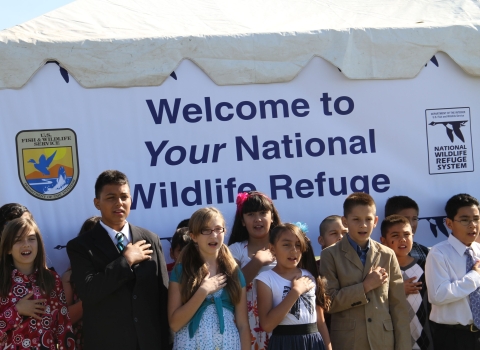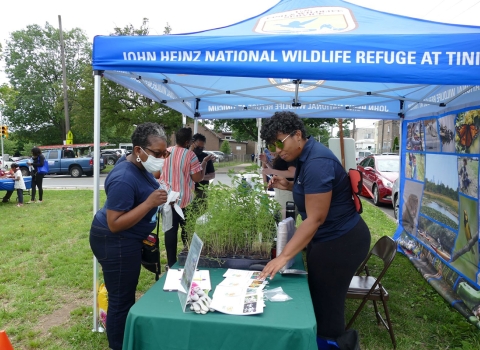The Edwards Aquifer provides water to over 2 million people and thousands of agricultural irrigators in the south central Texas region. Additionally, its unique artesian springs and aquatic environment are home to a number of endangered and threatened species that occur nowhere else.
The Edwards Aquifer Habitat Conservation Plan (EAHCP), now in its ninth year, supports protection and recovery of those federal listed species.
The EAHCP has been good news, for instance, for expansion of the federally endangered Texas wild-rice, leading to a 125% increase in the plant’s coverage area.
Additionally, the EAHCP program has led to a decrease in non-native aquatic plant species in the Comal and San Marcos spring systems, which include their namesake rivers. That helps not only Texas wild-rice but six other endangered species, one threatened species, and three petitioned species.
Groundwater conservation of the Edwards Aquifer has also increased, which aids pretty much everything, including people. Even during periods of drought, the EAHCP has maintained springflow by implementing measures such as the Regional Water Conservation Program.
The EAHCP was also set up with Environmental Justice in mind.
EAHCP developers considered how water use restrictions may impact the livelihood and economy of agricultural communities in the area. Water conservation efforts, they knew, could hit rural communities.
Millions in the United States lack basic access to safe drinking water and sanitation, two nonprofits said in 2019. Clean water is Environmental Justice.
To ease that effect, the Regional Water Conservation Program partnered with municipal water providers to distribute low-flow toilets and promote other water-saving measures including leak detection.
In Uvalde, the program distributed and installed nearly 3,000 high-efficiency/low-flow toilets and plumbing kits from 2014 through 2016.
Groundwater conservation has also improved equitable access to recreation.
The San Marcos River runs through the city of San Marcos, with a population of 43% Hispanic or Latino and an official Hispanic Serving Institution (Texas State University). The city has numerous public access sites and parks for people to enjoy the river for free. That means that during the heat of the summer the community has a cool place to swim.
The success of the EAHCP with respect to species recovery, water savings, and Environmental Justice makes it an example for other Habitat Conservation Plans the Service develops.
- This article is from the summer issue of Fish & Wildlife News, our quarterly magazine.
- More Fish and Wildlife News, including how to subscribe to our Fish and Wildlife News email list.







